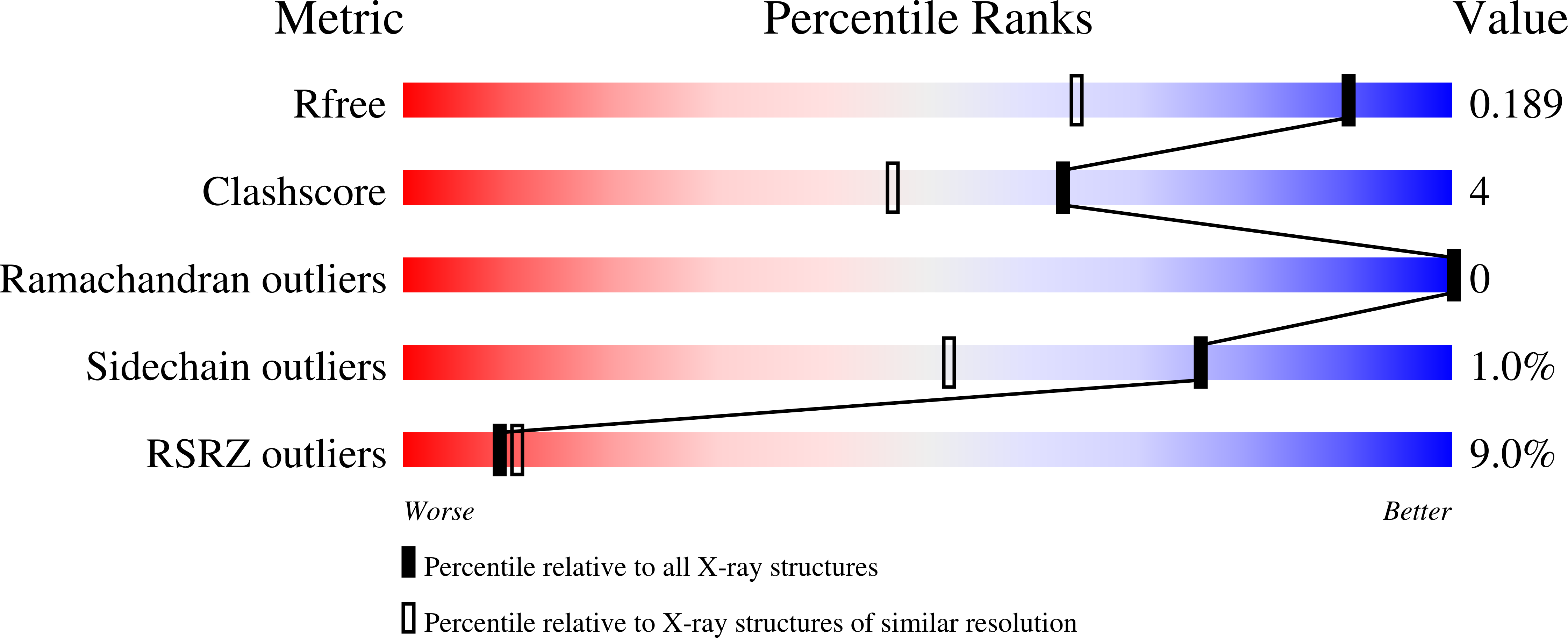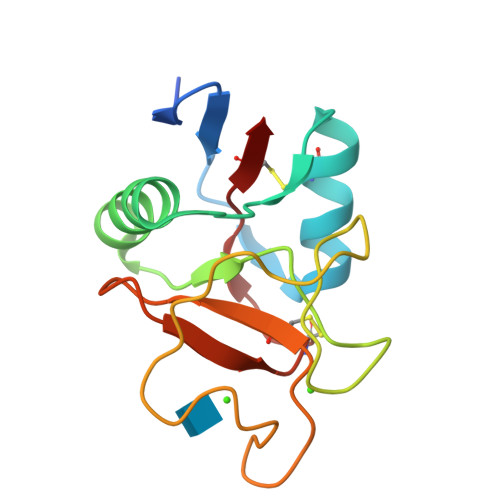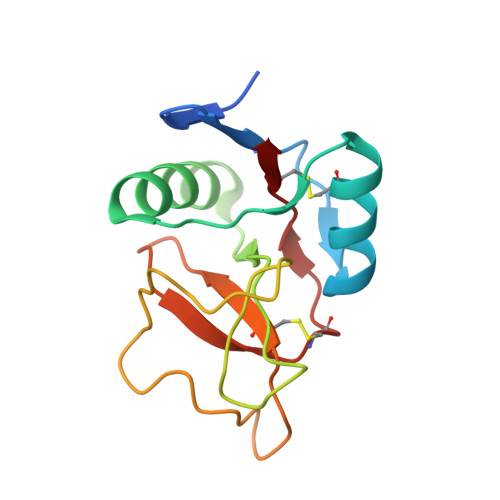Atomic-resolution crystal structures of the immune protein conglutinin from cow reveal specific interactions of its binding site withN-acetylglucosamine.
Paterson, J.M., Shaw, A.J., Burns, I., Dodds, A.W., Prasad, A., Reid, K.B., Greenhough, T.J., Shrive, A.K.(2019) J Biological Chem 294: 17155-17165
- PubMed: 31562242
- DOI: https://doi.org/10.1074/jbc.RA119.010271
- Primary Citation of Related Structures:
6RYG, 6RYJ, 6RYM, 6RYN - PubMed Abstract:
Bovine conglutinin is an immune protein that is involved in host resistance to microbes and parasites and interacts with complement component iC3b, agglutinates erythrocytes, and neutralizes influenza A virus. Here, we determined the high-resolution (0.97-1.46 Å) crystal structures with and without bound ligand of a recombinant fragment of conglutinin's C-terminal carbohydrate-recognition domain (CRD). The structures disclosed that the high-affinity ligand N -acetyl-d-glucosamine (GlcNAc) binds in the collectin CRD calcium site by interacting with the O3' and O4' hydroxyls alongside additional specific interactions of the N -acetyl group oxygen and nitrogen with Lys-343 and Asp-320, respectively. These residues, unique to conglutinin and differing both in sequence and in location from those in other collectins, result in specific, high-affinity binding for GlcNAc. The binding pocket flanking residue Val-339, unlike the equivalent Arg-343 in the homologous human surfactant protein D, is sufficiently small to allow conglutinin Lys-343 access to the bound ligand, whereas Asp-320 lies in an extended loop proximal to the ligand-binding site and bounded at both ends by conserved residues that coordinate to both calcium and ligand. This loop becomes ordered on ligand binding. The electron density revealed both α and β anomers of GlcNAc, consistent with the added α/βGlcNAc mixture. Crystals soaked with α1-2 mannobiose, a putative component of iC3b, reported to bind to conglutinin, failed to reveal bound ligand, suggesting a requirement for presentation of mannobiose as part of an extended physiological ligand. These results reveal a highly specific GlcNAc-binding pocket in conglutinin and a novel collectin mode of carbohydrate recognition.
Organizational Affiliation:
School of Life Sciences, Keele University, Staffordshire ST5 5BG, United Kingdom.





















